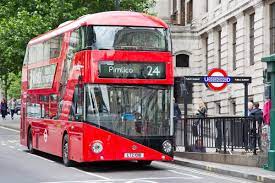Top tips for safer travel in London

Published on 28 July 2025 04:02 PM
Here at TfL, we’re committed to making travel safer for everyone. As TfL’s Chief Safety, Health and Environment Officer, I know how important it is that our roads and transport network feel safe for you to be able to access the services you need and opportunities London has to offer. When we leave our homes each day, we should feel safe and confident about the journey ahead.
The Mayor of London and Transport for London have committed to the bold ambition to reduce the number of deaths and serious injuries on London’s transport network to zero by 2041 – this is known as our Vision Zero goal. This ambition stretches across all of London’s roads and transport network, on railways, trams and Tubes, and streets. It is a significant challenge, but with bold action, and by working together, we can achieve this aim.
Whether travelling on public transport or walking, here are some top tips for safer travel in London.
Getting out and about on public transport
From Tube to buses, trams and Overground, taking extra care can help make your journey smoother. And remember, we’re here to help too. Here’s some tips on what you can do to travel safer while on the move in London:
- Hold the handrail especially on stairs and escalators, and onboard moving vehicles.
- Take your time and don’t feel pressured to rush at a pace you’re not comfortable with – your safety is more important.
- Wait until the vehicle has stopped before standing up to get off the bus or train.
- Take extra care in wet weather – surfaces can be slippery.
- Please do not try to prevent doors from closing by holding out your arm, bag, walking stick or other possessions. These can become trapped in the train doors which will not automatically reopen before the train departs.
We’re here to help
All our staff are trained to offer assistance and support if you need it.
- We offer a turn up and go service on the Tube, London Overground and Elizabeth line. Our turn up and go service, where you can ask our staff for assistance for your journey, is available to everyone, including those with visual or mobility impairments, and families or groups.
- Dropped something on the tracks? Ask a staff member or press the help button and we’ll safely retrieve it for you.
- We have staff at all Tube, Elizabeth line and London Overground stations whenever services are running. Some piers, all boats, the IFS Cloud Cable Car and Victoria Coach Station are staffed too. On the DLR and trams, most stops and stations are unstaffed, although you can find a member of staff on the train or tram.
- Need to use a lift and aren’t sure where they are? Speak to a member of staff. If you use a smart phone, our TfLGo app provides details of where lifts can be found in our stations.
- Help points can be found throughout our networks. You can use them to contact staff for information and assistance or in an emergency.
- If you need extra time to sit down before the bus pulls away, please let the driver know when you board. All London bus drivers undertake Equality, Diversity and Inclusion (EDI) training as part of their induction. This equips drivers with the latest knowledge, skills and understanding of how to ensure a pleasant experience for all passengers.
- If there’s ever an issue with the service you receive on the TfL network, you can contact our Customer Services team on 0343 222 1234 (call charges may apply) or find out how else you can contact us at Help & contacts - Transport for London.
Vision Zero for London’s roads
It is neither inevitable nor acceptable that anyone should be killed or seriously injured when travelling in London. Unfortunately, older pedestrians are disproportionately affected by road deaths and injuries in London, an inequality we are working hard to address.
It’s fantastic that the number of people walking in London has increased - but so have the number of large lorries driving through London, keeping London moving and the economy growing.
Large lorries (HGVs) are disproportionately dangerous to people walking and cycling on our streets. Since TfL introduced requirements for lorries to fit technology to minimize blind spots, known as the Direct Vision Standard, the number of people killed in collisions with HGVs has fallen significantly. However, there are still some important things to keep in mind when out and about.
Staying safe around lorries
Did you know the driver can be as much as 9 feet above the road?
There are some simple tips to keeping safe around lorries; please consider making them a habit when out and about:
- If possible, make eye contact with the lorry driver to increase the chance that the driver knows you are near
- Even in slow moving traffic, don’t cut across the road in front of a lorry. The vehicle could move off at any time and the driver may not know you are there
- Even at traffic lights or zebra crossings, avoid crossing directly in front or from the side of the lorry. The lights may change and the driver may assume the path is clear
- If in any doubt about crossing in front of a lorry, let it move off past you before you cross
I hope the tips included in this article are helpful. TfL is committed to doing what we can to make our transport network and roads safer to ensure older people are able to enjoy everything London has to offer.
Lilli Matson is Chief Safety, Health and Environment Officer at TfL

